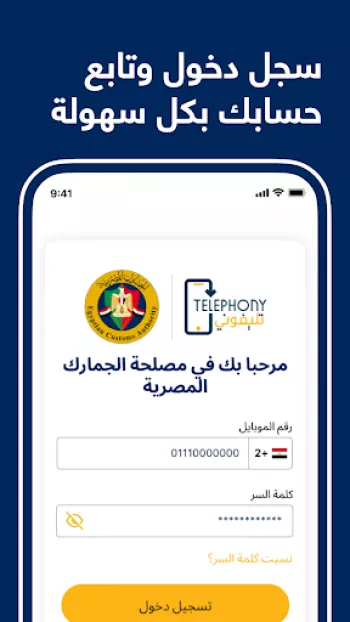Apps Home

The Role of Citizen Engagement Tools in Modern Governance
In our digitized world, citizen engagement tools have become pivotal in bridging the gap between government authorities and the populace. These tools are designed to foster transparent and responsive communication, enabling citizens to participate more actively in governance. By streamlining processes such as feedback loops, issue tracking, and service requests, these tools allow citizens to engage with government bodies in a manner that is both intuitive and efficient. With the growth of smartphone usage, mobile applications have become a key platform for such interactions. These apps often feature dashboards that allow users to report issues, track progress, communicate with officials, and access public services. Technologically, these tools leverage cloud computing, data analytics, and secure communication protocols to ensure that interactions are reliable and confidential. For instance, when citizens report a pothole or a malfunctioning streetlight, the tool can automatically notify the relevant department, generate a work order, and monitor the resolution process. This not only enhances service delivery but also builds trust in public institutions by making operations more transparent. Moreover, citizen engagement tools can be equipped with data analytics capabilities that help governments understand local demographics and citizen needs better. By analyzing patterns in service requests, governments can allocate resources more strategically, identify underserved areas, and even predict emerging issues. This proactive approach not only addresses current problems but also anticipates future needs. In addition, these tools help in democratizing access to information, thereby reducing bureaucratic hurdles and allowing citizens to stay informed about government plans, budgets, and initiatives. Consequently, citizen engagement tools don't just facilitate communication but also empower citizens by making them an integral part of governance processes. Through such tools, we are witnessing a shift from traditional top-down governance models to more participative and inclusive forms of governance.
Technical Features and Integration of the Citizen Engagement Tool
The technical architecture of the Citizen Engagement Tool is intricate and robust, designed to handle substantial amounts of data while maintaining high performance and security standards. The backbone of the tool is its three-tier architecture comprising of the user interface, application logic, and database layers. The user interface, often materialized in the form of mobile applications or web portals, leverages responsive design principles to be accessible across various devices and screen sizes. HTML, CSS, and JavaScript, along with frameworks like React or Angular, are typically used to provide a seamless user experience. On the application layer, the tool implements RESTful APIs that facilitate communication between the user interface and the backend systems. These APIs are crucial for performing operations like authenticating users, fetching data, and processing transactions. Furthermore, integration with governmental databases is pivotal for the tool's functionality, allowing it to access and update public records, service request logs, and other relevant datasets in real-time. The database layer is often supported by SQL-based systems like MySQL or PostgreSQL, which ensure data integrity and support complex querying. For heightened performance, NoSQL databases such as MongoDB might also be used, especially when dealing with unstructured data or requiring horizontal scaling. Security is paramount in this architecture, with end-to-end encryption, multi-factor authentication, and regular security audits being standard practices to protect sensitive citizen information. This technical amalgamation ensures that the tool operates smoothly and securely, while also being scalable to accommodate growing user bases and expanding functionalities. The ability to integrate seamlessly with existing IT infrastructures is one of the major strengths of the Citizen Engagement Tool, making it an indispensable part of modern digital governance ecosystems.
Advantages and Challenges of Implementing Citizen Engagement Tools
Implementing citizen engagement tools within governmental frameworks yields substantial benefits, transforming how public services are delivered and how citizens interact with their governments. One of the foremost advantages is the increased efficiency and responsiveness in handling public grievances and service requests. Citizens are no longer required to navigate complex bureaucratic channels to get their issues addressed; instead, they can simply use these tools to reach out directly to the appropriate departments. This not only speeds up the resolution process but also reduces the workload on government offices by automatically categorizing and routing requests to the right levels. Furthermore, these tools play a crucial role in increasing governmental transparency and accountability, as they allow citizens to track the status of their requests, thereby building trust in public institutions. On the administrative side, data collected through these tools can help in decision-making, allowing governments to tailor their policies based on actual citizen feedback and requirements. However, implementing these tools is not free from challenges. One major hurdle is the digital divide; ensuring that all citizens, regardless of their technological literacy or access, can benefit from these tools is crucial. Additionally, integrating a new digital tool with existing IT systems can be complex, often requiring significant time and budget allocation for successful deployment. Privacy concerns also pose significant challenges, as governments must ensure that personal data is handled in compliance with regulations. Overcoming these hurdles requires a comprehensive approach, including user education campaigns, infrastructure investments, and stringent data protection measures. Despite these challenges, the transformative potential of citizen engagement tools makes them indispensable for fostering a more inclusive and participatory governmental process.
Case Study: The Success of the Telephony Citizen Engagement App
The Telephony Citizen Engagement App serves as an exemplary case study in the effective implementation of digital tools aimed at enhancing citizen-government interactions. This application has revolutionized how citizens in multiple regions register and manage mobile devices, offering a smooth, secure, and user-friendly experience. Central to its success is the seamless integration of advanced features such as passport and IMEI scanning. By automating the data entry process through optical character recognition (OCR) technology for passport scanning and direct sensing for IMEI numbers, the app eliminates the need for manual entry, thereby minimizing human errors and expediting the registration process. Furthermore, the app incorporates highly secure payment systems, allowing users to settle any applicable fees directly through the platform with peace of mind, thanks to the implementation of encrypted transactions and two-factor authentication. This emphasis on security is crucial, as it ensures user data's confidentiality and integrity throughout all interactions. The app's user-centric design makes it accessible to a broad demographic, employing intuitive navigation and multilingual support to cater to a diverse user base. Continuous updates to the app, informed by user feedback and technological advancements, ensure that its features remain relevant and beneficial to its users. The app's success underscores the importance of adopting an iterative, feedback-driven development approach and highlights how leveraging technology can enhance public service delivery. Through the use of push notifications, citizens are kept informed about the status of their registrations or any policy changes, facilitating transparent communication. Overall, the Telephony Citizen Engagement App exemplifies how targeted digital solutions can address specific public service challenges, setting a benchmark for future innovations in the field.
Accessibility and Future Directions for Citizen Engagement Tools
The future of citizen engagement tools lies in enhancing accessibility and embracing emerging technologies to offer more sophisticated and inclusive solutions. One of the primary focuses moving forward will be to bridge the digital divide, ensuring that all citizens, regardless of socio-economic status or geographic location, can access and benefit from these tools. Governments and developers should prioritize simplicity in user interfaces while providing comprehensive support to educate users about the functionalities of these tools. Furthermore, initiatives to extend internet access and improve digital literacy are necessary to foster widespread adoption. The integration of artificial intelligence and machine learning algorithms holds promise in making these tools more intuitive and responsive. By analyzing user interactions and feedback in real-time, AI can suggest personalized actions to users and pre-emptively address issues based on predictive analytics. Additionally, the utilization of blockchain technology can bolster transparency and trust by enabling immutable records of transactions and interactions, critical in maintaining user confidence. As digital identity solutions mature, they will likely be incorporated into these tools to streamline authentication processes, further simplifying user experiences. Another exciting frontier is the incorporation of virtual and augmented reality to offer immersive ways for citizens to engage with public services and environments. Looking ahead, citizen engagement tools will become more interconnected, forming ecosystems that offer holistic solutions beyond isolated task management. This advancement will help build smart cities where services are seamlessly integrated, amplifying the role of these tools in civic management and everyday life. Embracing these future directions, we can anticipate a transformation in civic engagement, where technological inclusivity and innovation ensure every citizen can contribute to and benefit from their community's growth and governance. For those interested in exploring the existing features offered, consider the expansive reach of the Telephony Citizen Engagement App. You may Download for Android to see firsthand how modern technology is facilitating easier connections with government authorities.
Share Your Opinion
Your Email Will Not Be Published.
All Rights Reserved © Apps Home 2025







































Aya Rady
It's a disaster application that's supposed to be secured for payment (space, bugs, crashes) . This makes me ask the question: Why issuing a new ap...
Moe Ash
app not working, constantly crashes and at some point it froze my phone. un-installed.
Haitham Diab
The application gives wrong information and is not accurate. Although the mobile was bought from inside Egypt and the phone worked with two differe...
Mad Khalifa
I feel insecure with this app , putting my phone serial or IMEI on an app that doesn't support any protection or encrypt for my private info , I re...
Ahmed M. Sayed
تطبيق دائما معلق ولا يعمل بكفاءة من خارج مصر ... يحتاج لاعادة تصميم واعادة برمجة. The application is always hanging and does not work efficiently f...